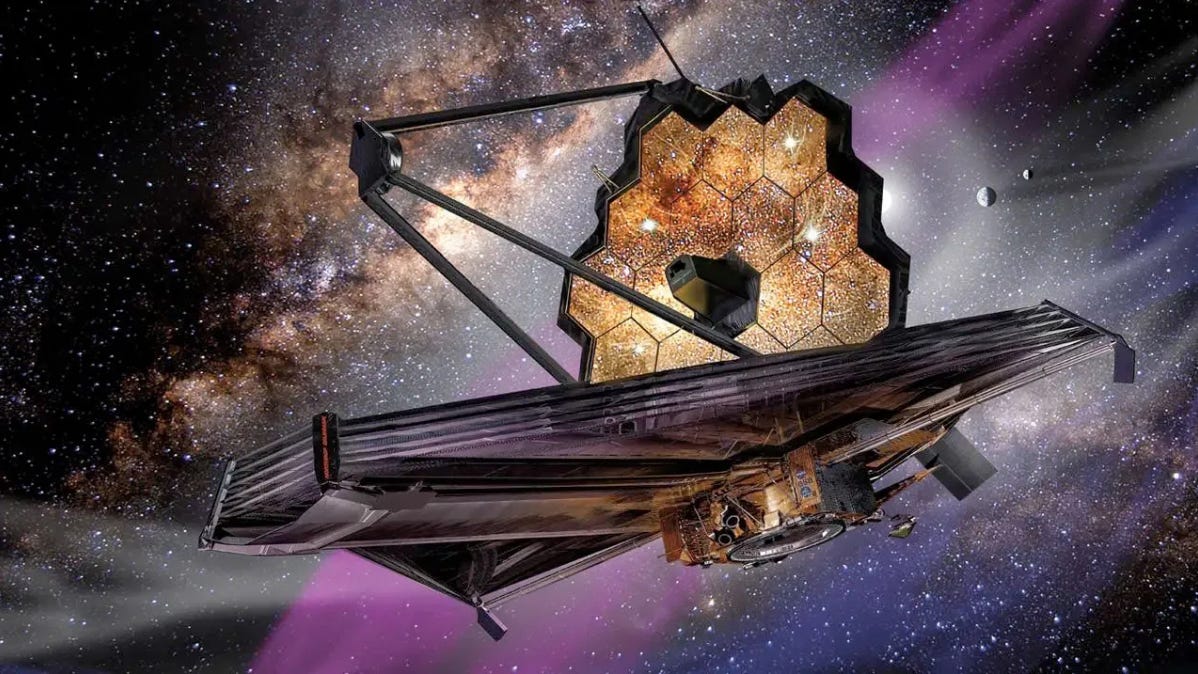Alien Life, Mind Control, Asteroid Samples, Quantum Dots, and Human Consciousness - Speciale Focus #11
Mind Space? More like Mind & Space for the month :P
JWST detects possible signs of life away from Earth
NASA's James Webb Space Telescope has discovered carbon-bearing molecules like methane and carbon dioxide on K2-18 b, an exoplanet 8.6 times Earth's mass. K2-18 b orbits a dwarf star in the habitable zone, 120 light-years away in the Leo constellation. The presence of methane, carbon dioxide, and the absence of ammonia support the idea of a hydrogen-rich atmosphere over a water ocean. There's also a possible detection of dimethyl sulfide, a molecule associated with life on Earth. Read more here.
Neuralink & Human Trials - A new frontier in Brain Computer Interface
Elon Musk’s Neuralink, after gaining FDA approval for human trials, is seeking participants for its "PRIME Study." This six-year trial aims to test Neuralink technology designed to assist individuals with paralysis in controlling devices. They are looking for participants with quadriplegia due to spinal cord injury or ALS, aged 22 and above, with a reliable caregiver. The study involves evaluating the N1 brain-computer implant, the R1 surgical robot for implantation, and the N1 User App that translates brain signals into computer commands to assess safety and effectiveness.
Nasa successfully retrieves Asteroid samples back to earth!
The OSIRIS-REx spacecraft, launched on September 8, 2016, was the first U.S. mission to collect a sample from an asteroid. It traveled to the near-Earth asteroid Bennu and collected a sample of rocks and dust from its surface. On September 24, 2023, the spacecraft returned to Earth and dropped off the sample in the Utah desert. Preliminary studies of the asteroid sample suggest evidence of high-carbon content and water, which could indicate the presence of the building blocks of life.
NASA plans to conduct further analyses of the sample in the coming years to better understand its composition. The goal of the sample collection was 60 grams of asteroid material, but the spacecraft collected even more material than expected, including some on the outside of the collection hardware. Scientists will be studying this material for decades to come to gain insights into the solar system's formation, the seeding of precursor materials for life on Earth, and asteroid collision prevention. NASA plans to preserve at least 70% of the sample for further research by scientists worldwide. More than 200 scientists from around the world will be involved in exploring the sample's properties, and some samples will be loaned for public display.
Seriously, how far have we come as a species!
Quantum Dots - The Nobel Prize in Chemistry
The Nobel Prize in Chemistry for this year has been awarded for the discovery and synthesis of nanometer-sized semiconductor crystals known as quantum dots. These tiny particles exhibit properties determined by quantum size effects, which means their physical size dictates the behavior of their charge carriers.
Quantum dots represent a distinct class of materials that differ from molecules and bulk materials. While they share the same atomic composition and structure as bulk materials, their properties can be precisely controlled by adjusting a single parameter, the size of the quantum dot. For instance, CdSe quantum dots can have their optical properties tuned across the entire visible spectrum. This tunability extends to various other material characteristics, such as redox potentials, melting temperature, and solid-solid phase transitions. The discovery and synthesis of quantum dots have been a significant milestone in the field of nanoscience and nanotechnology. It has demonstrated that at the nanoscale, materials acquire size-dependent properties that can be harnessed for innovative applications.
Today, quantum dots can be produced with precise and size-dependent properties using cost-effective, solution-based chemical methods. They have become widely accessible and have found applications in areas like lighting technology, display technology, biomedical imaging, infrared photo-detection, solar energy conversion, light-emitting diodes, diagnostics, and photocatalysis.
Is Consciousness Part of the Fabric of the Universe?
Over 400 years ago, Galileo laid the foundation for modern science by revealing that many natural phenomena can be explained through precise mathematical laws. However, he recognized that not everything could be quantified, particularly qualities like colors, tastes, and smells, which he believed existed only in the minds of conscious beings.
While the physical sciences have made significant progress in explaining the workings of the universe, understanding the nature of consciousness, the "hard problem" as described by philosopher David Chalmers, remains a formidable challenge. Neuroscientists have identified neural correlates of consciousness, but they have not yet explained how physical matter gives rise to subjective experience. This enduring mystery persists in the study of the mind.
Well, Physicists and philosophers recently met to debate a theory of consciousness called panpsychism - Check out what transpired here.
We’ll leave you with this for the month and come back soon with another set of wow reads specially curated for the curious you!
Until then, Team Speciale signing off!








